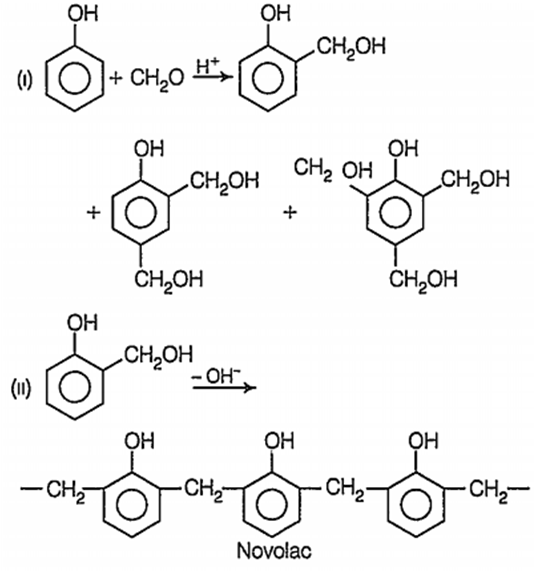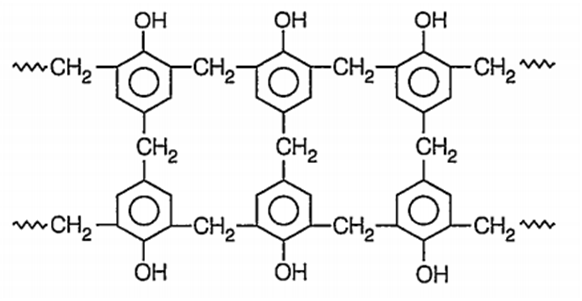 Multiple Choice Questions
Multiple Choice QuestionsSelect the correct statement
Orlon is an addition polymer
Dacron is an addition polymer
Orlon is a condensation polymer
The monomers of orlon is styrene
Which of the following polymers can be used for lubrication and as an insulator?
SBR
PVC
PTFE
PAN
The hard plastic covers of telephones are made from polymers of
acrylonitrile
styrene
fluoromethane
phenol and formaldehyde
D.
phenol and formaldehyde
Phenol-formaldehyde is used in making covers of telephones. It is made by the reaction of phenol and Formaldehyde.
Step I: Formation of novolac

Step II: On heating above structure, it gives network of phenol and formaldehyde, also known as bakelite.

Which one of the following monomers gives the polymer neoprene on polymerisation?
CH2=CH-Cl
CCl2=CCl2
CH2=CCl-CH=CH2
CF2=CF2
Consider the following statements.
1.Thermoplastic polymers are formed by condensation polymerisation.
2.Thermosetting polymers can be remoulded or reshaped.
3. Nylon-6 is also known as perlon-L.
4. Glyptal is a thermosetting plastic.
The wrong statement(s) is/are
1 and 3
2 and 4
1 and 2
3 and 4
Match List-l with List-II and select the correct answer using the codes given below:
| List I | List II |
| A. Polyesters | 1. Buna-S |
| B. Polyamides | 2. Orlon |
| C. Polydienes | 3. Terylene |
| D. Polyacrylates | 4. Nylon-6 |
Codes:
A B C D
1 2 3 4
A B C D
3 4 1 2
A B C D
4 3 2 1
A B C D
1 3 4 2
Dacron is obtained by the condensation polymerisation of
Dimethyl terephthalate and ethylene glycol
Terephthalc acid and formaldehyde
Phenol and phthalic acid
Phenol and formaldehyde
